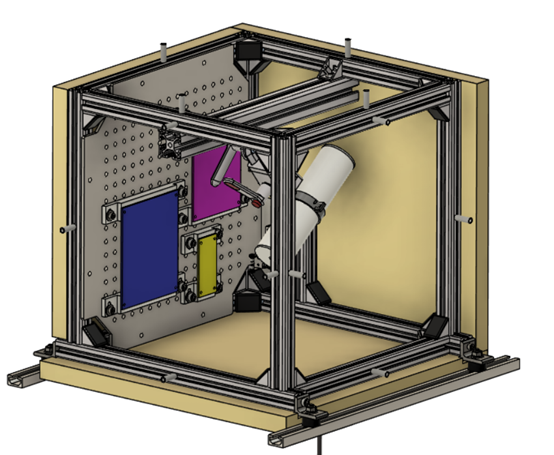Extraordinary balloon mission of WUT students
The team from Student Space Association has qualified for the international BEXUS competition
BEXUS (Balloon-borne Experiments for University Students) is a programme of the German Space Agency and the Swedish National Space Council in cooperation with the European Space Agency (ESA), which enables students to carry out scientific missions using high-altitude balloons. The participants' task is to design and prepare research equipment which, after undergoing numerous tests, will be launched by a balloon during a stratospheric flight.
Wave hunters
The TOTORO (Test Observations of Transient Objects and RadiO) team is made up of passionate people who have gained experience in several important research programmes. Some have already participated in baloon missions, others in the GLACiER, SAMPLE 1 and 2 (as part of the IGLUNA campaign), as well as Mars rover competitions.
- As soon as we heard about the next edition of BEXUS, we immediately knew that we wanted to take part in it. Admittedly, we did not immediately have an idea of what kind of experiment we would start with, but the work on the scientific concept started very quickly, says Aliaksandra Shmyk, the project leader.
The team decided to focus on the radio aspect of their mission. The idea is to create a solution that will allow the recording of low-frequency electromagnetic waves occurring above the ionosphere. That is Auroral Kilometric Radiation (AKR). The range of radio waves, which is the object of the research, is very strongly attenuated in the ionosphere, which is why AKR emissions are usually studied using satellite instruments. Our students want to see if it will be possible to record the phenomenon from a system launched into the stratosphere and compare the results with data collected by satellites in higher orbits.
Challenges to overcome
To achieve their objective, young engineers must create a device to be installed in the nacelle of a stratospheric balloon. This should be a module weighing no more than 4 kilograms and consisting of an electronic part, sensors, a radio communication system, heat management and power supply. When designing, students must pay attention to the specific conditions under which the experiment is to operate. These includes extreme temperature fluctuations, against which sensitive scientific instruments must be protected.
In order to record the signals, two independent systems have been designed that use two different types of antennas: one will be installed inside the structure and the other one outside. Using two solutions will allow more data to be collected and compared with each other. The designers from Warsaw University of Technology want to protect themselves against the interference of the recorded data by unwanted signals from the Earth and on-board devices. A specially designed system of filters is to help with this.
A unique opportunity
As a result of the selection process, four teams were qualified for the BEXUS programme, including a team from the Warsaw University of Technology. The organizers appreciated the transparent assummptions of the project and the clear goals of its authors
— “We are excited to be able to participate in this programme and to go to Sweden. In the case of our experiment, the closer the polar circle the better, that is where the Earth's magnetic field lines are most concentrated and the greatest chance for the TOTORO mission to succeed," emphasizes Aliaksandra Shmyk.
Our students face now several months of hard work. In February they will have to present a preliminary design of the subsystems to the organizers, after which they will be assigned an ESA mentor who will help them finalise the design.
At the same time, the team from Warsaw University of Technology is supported technically and scientifically by the Space Research Center of the Polish Academy of Sciences. The research team of the Space Research Centre of the Polish Academy of Sciences provided help with establishing the mission's objectives and the possibilities for achieving them. Our students were also granted access to electronic laboratories located at the institute.
Work on TOTORO will culminate in a several-hour baloon flight planned for September and early October during the campaign in the Swedish Esrange Space Center. The data collected during the mission will be analyzed, which will enable the verification of the original solutions used in the project.
The TOTORO team consists of: Karol Bresler, Maurycy Ciarka, Gabriela Jas, Kacper Kidała, Pavlo Kozin, Tomasz Miś, Gabriela Mystkowska, Aliaksanda Shmyk, Katarzyna Wiater, Ryszard Zawiła, Bartosz Źrebiec. Supervisor: Prof. Jan Kindracki.
The project Preliminary Development of a stratospheric experiment design for the BEXUS balloon flight programme received funding in the Ministry of Education and Science competition "Student Scientific Circles Create Innovations".









